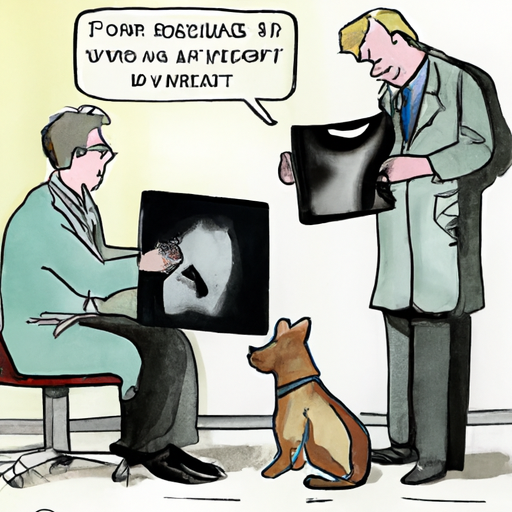Understanding Hip Dysplasia
Understanding hip dysplasia in dogs starts with an overview of what it actually is. Hip dysplasia, broadly speaking, is a skeletal condition where the ball and socket joint of the hip doesn’t fit together properly. This leads to the hip joint loosening over time, causing discomfort and limiting movement for your beloved pet.
As a caregiver, it’s your job to ensure your dog’s well-being, which includes being aware of potential health issues like hip dysplasia. So, let’s delve deeper.
Genetic Factors and Hip Dysplasia
First and foremost, hip dysplasia is often hereditary. This means if your dog’s parents had hip dysplasia, there’s a higher chance your dog might also develop this condition. Certain breeds are more susceptible to hip dysplasia, including:
- German Shepherds
- Labrador Retrievers
- Saint Bernards
- Great Danes
- Golden Retrievers
However, it’s not just about genetics. Other aspects can play a role too.
Environmental Factors and Hip Dysplasia
While genetics play a significant role, environmental factors can also contribute to the development of hip dysplasia. Dogs that are overweight or obese are at a higher risk. A poor diet, lack of exercise, and rapid growth can all exacerbate the problem.
Here is a simple table to illustrate some common environmental factors:
| Factors | Description |
|---|---|
| Overweight | Extra weight puts more stress on the hip joint |
| Poor Diet | Lack of essential nutrients can affect bone and joint health |
| Lack of Exercise | Regular movement helps maintain joint health |
| Rapid Growth | Dogs that grow too quickly may develop skeletal issues, including hip dysplasia |
Preventing Hip Dysplasia
Prevention is always better than cure. Here are some ways you can help prevent hip dysplasia in your dog:
- Maintain a Healthy Weight: Regular exercise and a balanced diet can help your dog maintain a healthy weight.
- Nutrition: Ensure your dog gets the right nutrients, especially during their growth period.
- Regular Vet Check-ups: Regular vet visits can help detect any early signs of hip dysplasia.
- Controlled Exercise: Avoid excessive running or jumping on hard surfaces, especially in young dogs.
Frequently Asked Questions (FAQs)
Q: What are the symptoms of hip dysplasia in dogs?
A: Symptoms include difficulty moving, limping, or a decrease in activity levels.
Q: Can hip dysplasia be cured?
A: While it can’t be cured, it can be managed with proper care, medication, and in some cases, surgery.
Q: How is hip dysplasia diagnosed?
A: A vet will usually diagnose hip dysplasia through physical examinations and X-rays.
Q: Can small dogs get hip dysplasia?
A: While it’s more common in large breeds, small dogs can also develop hip dysplasia.
Q: Is hip dysplasia painful for dogs?
A: Yes, it can cause discomfort and pain, particularly in severe cases or if left untreated.
In conclusion, as a caregiver, the health of your dog is in your hands. Being aware of issues like hip dysplasia is the first step toward a healthier, happier pet.



